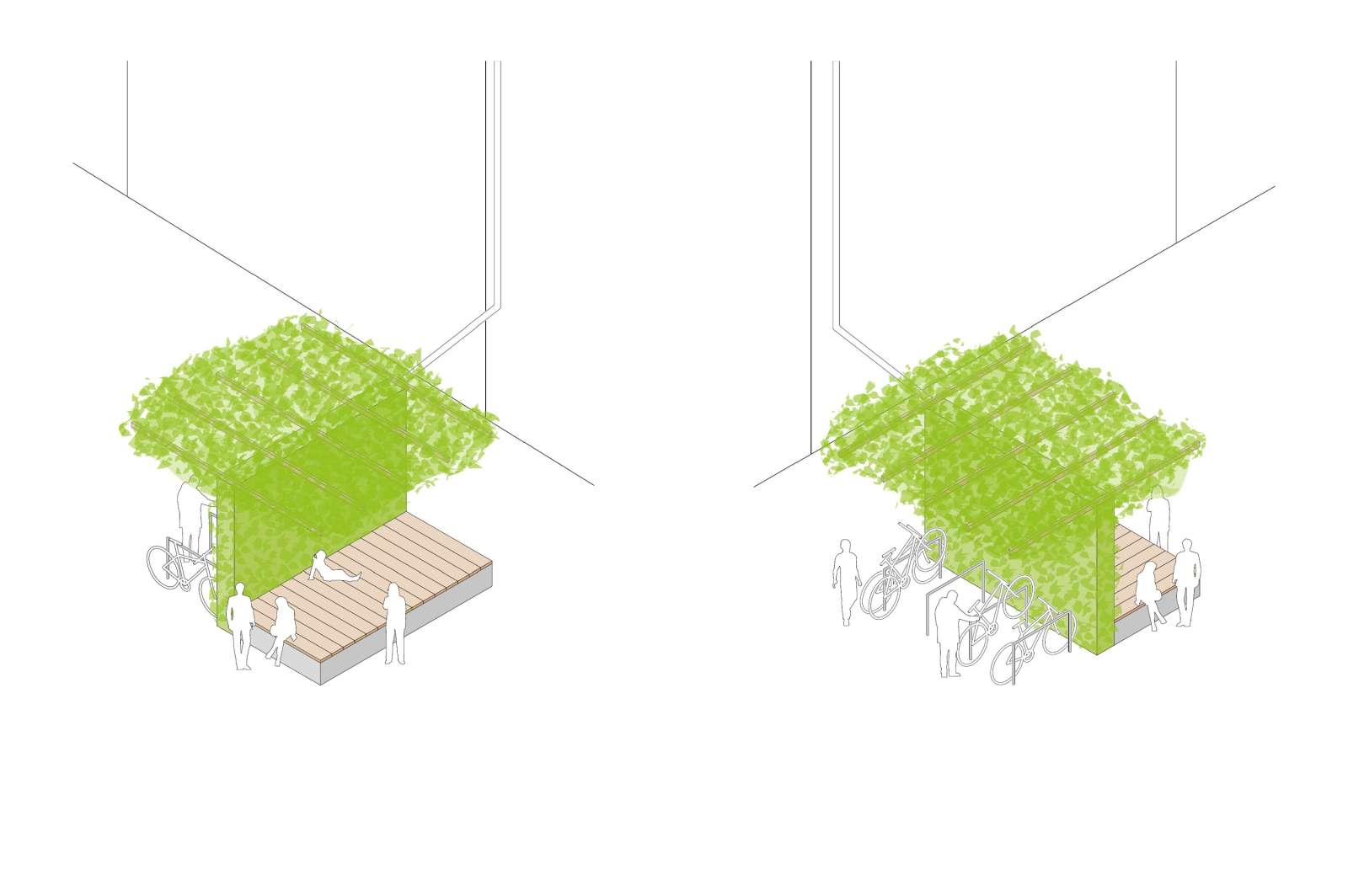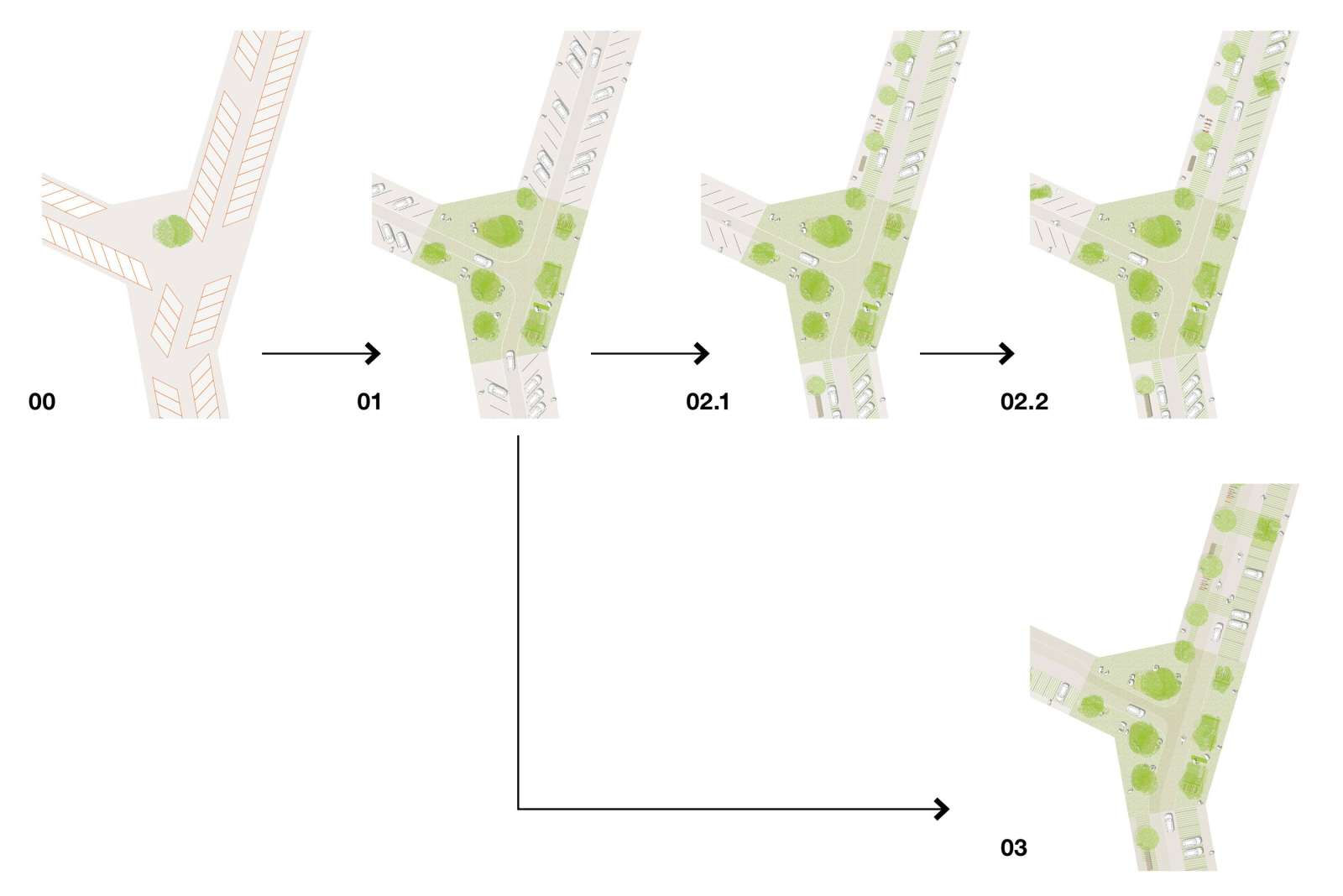In dense and highly sealed inner-city neighborhoods, it is difficult to find areas for new green space due to the high use pressure. Wherever possible, trees should be planted in the streets, as in most cases this is the most effective and robust form of urban greening. However, Freiligrathstrasse is a typical example of a street where this is unfeasible in many areas due to underground infrastructure. For these sites, a combination of freestanding vertical greenery with horizontal trellises is proposed, which are "constructed trees" that take up only a small footprint and require little or no root space in the ground.
Today, Freiligrath Street is almost completely sealed and all precipitation is directed to the combined sewage system. During heavy rain events, this potentially contributes to overloading the sewage system and amplifying flood events. The use of roof water for irrigation, extensive unsealing of the parking lot areas, and infiltration in the planting beds around the trees will not only prevent flooding, but also allow for ecological and economic irrigation of the greenery and improve the microclimate through shading and evaporative cooling.
The study for Freiligrathstraße combines user requirements, ecological-urban climatological approaches and mobility planning considerations in an holistic concept, which was elaborated in different variants and allows for a step-by-step implementation.

